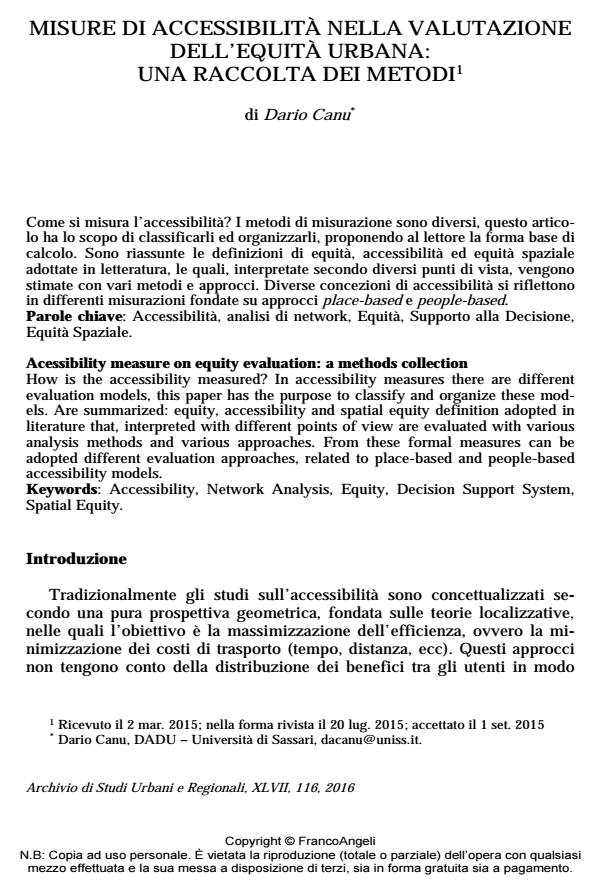Acessibility measure on equity evaluation: a methods collection
Journal title ARCHIVIO DI STUDI URBANI E REGIONALI
Author/s Dario Canu
Publishing Year 2016 Issue 2016/116
Language Italian Pages 24 P. 115-138 File size 148 KB
DOI 10.3280/ASUR2016-116006
DOI is like a bar code for intellectual property: to have more infomation
click here
Below, you can see the article first page
If you want to buy this article in PDF format, you can do it, following the instructions to buy download credits

FrancoAngeli is member of Publishers International Linking Association, Inc (PILA), a not-for-profit association which run the CrossRef service enabling links to and from online scholarly content.
How is the accessibility measured? In accessibility measures there are different evaluation models, this paper has the purpose to classify and organize these models. Are summarized: equity, accessibility and spatial equity definition adopted in literature that, interpreted with different points of view are evaluated with various analysis methods and various approaches. From these formal measures can be adopted different evaluation approaches, related to place-based and people-based accessibility models.
Keywords: Accessibility, Network Analysis, Equity, Decision Support System, Spatial Equity
Dario Canu, Misure di accessibilità nella valutazione dell’equità urbana: una raccolta dei metodi in "ARCHIVIO DI STUDI URBANI E REGIONALI" 116/2016, pp 115-138, DOI: 10.3280/ASUR2016-116006